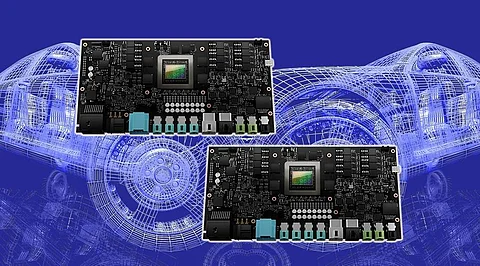

Nvidia soon expanded into self-driving cars. Drive Thor, a new processor from Nvidia, is intended for cars that will be on the road in 2025 and require significantly more computing capacity than those available now. Autonomous and assisted driving and other digital features like in-car entertainment would all be centralized.
However, Nvidia is not the only player vying for market supremacy. Intel, up to this point Nvidia's main rival in the self-driving cars market, intends to equip autonomous BMWs with Intel processors. Intel made a significant advancement in the field of autonomous vehicles in March when it paid $15.3 billion to acquire Mobileye, a pioneer in computer vision and mapping technologies for self-driving cars. Nvidia may also face competition from rival chip makers like Qualcomm, Google, and Apple, which are said to be developing chips that may be used in self-driving cars. Thor processor is AI technology based.
However, Nvidia is not the only player vying for market supremacy. Intel, up to this point being Nvidia's main rival in the self-driving cars market, intends to equip autonomous BMWs with Intel processors. Intel made a significant advancement in the field of autonomous vehicles in March when it paid $15.3 billion to acquire Mobileye, a pioneer in computer vision and mapping technologies for self-driving cars. Nvidia may also face competition from rival chip makers like Qualcomm, Google, and Apple, which are said to be developing chips that may be used in self-driving cars.
Atlan was a microprocessor that Nvidia had planned for 2024 but scrapped in favor of the Thor processor, which can run AI software at a pace of 2 quadrillion operations per second, which is twice as fast as Atlan and eight times faster than its current Orin processor. One essential Hopper component—the capacity to accelerate the potent AI tactic known as transformers—is incorporated into Thor. For less ground-breaking driver assistance features like lane keeping and automated emergency braking, Nvidia anticipates lower-end Thor variants.
At a press conference, Danny Shapiro, vice president of automotive at Nvidia, said: "If we look at a car today, advanced driver assistance systems, parking, driver monitoring, camera mirrors, digital instrument cluster, and infotainment are all different computers distributed throughout the vehicle." These operations won't require separate computers in 2025. Instead, Drive Thor will help manufacturers effectively combine various tasks into a single system, cutting the cost of the entire system.
A single chip that rules them all: One chip will assist automakers in creating software-defined autonomous vehicles. Continuous over-the-air upgrades by one chip enable numerous automakers to use Drive chips from Nvidia to create software-defined fleets.
Drive Thor will be able to run Linux, QNX, and Android simultaneously. According to Nvidia, partitioning technology makes sure that vital safety-related work doesn't get interrupted by less important activities, like infotainment. Robotics and medical equipment will both utilize Thor.
The founder and CEO of Nvidia, Jensen Huang, stated that advances in accelerated computing and artificial intelligence are occurring at lightspeed. With its super-fast performance and ability to deliver continually upgradeable, secure, and software-defined supercomputers on wheels, Drive Thor is the hero of centralized computing.
In Drive Thor, functions for automated driving and IVI using multi-domain computing. Numerous electric control units are often dispersed throughout a vehicle to power various tasks. Drive Thor enables manufacturers to effectively combine several functionalities onto a single system-on-a-chip (SoC), easing supply limitations and streamlining the development of vehicle designs, leading to drastically reduced costs, lighter weights, and fewer cables.
Drive Thor is the first AV platform to use an inference transformer engine, a new Tensor Core within an NVIDIA GPU, according to a statement from the company. It continued, "Drive Thor can increase the inference performance of transformer deep neural networks by up to 9x using this engine, which is crucial for supporting the enormous and complicated AI workloads involved with self-driving."
Thor will be a massive processor with 77 billion transistors, if not the largest one available. However, according to Nvidia, it will enable manufacturers to replace a bulkier, more expensive, and more power-hungry collection of smaller processors. For ordinary computing workloads, it also uses Hopper GPUs and CPU cores from Nvidia's 2023 Grace processor. It also uses the Ada Lovelace architecture, the newest GPU technology from Nvidia for gaming and design.
Join our WhatsApp Channel to get the latest news, exclusives and videos on WhatsApp
_____________
Disclaimer: Analytics Insight does not provide financial advice or guidance. Also note that the cryptocurrencies mentioned/listed on the website could potentially be scams, i.e. designed to induce you to invest financial resources that may be lost forever and not be recoverable once investments are made. You are responsible for conducting your own research (DYOR) before making any investments. Read more here.
